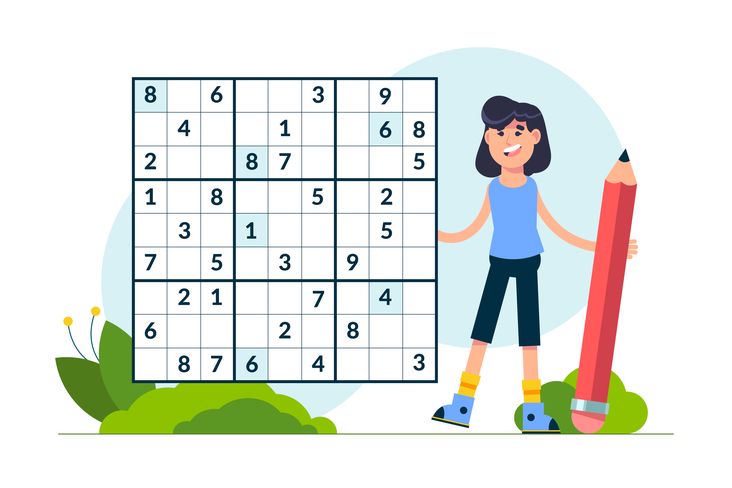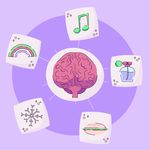Improve Your Brain Function by Playing Sudoku
May 10, 2024 by Vreny Blanco · 5 min read · Wellness, Focus

In this blog post, we examine the effects of puzzles on brain function, explore their potential as a preventive measure against cognitive decline, and provide tips on how to play Sudoku.
The Impact of Puzzle Games on Cognitive Health
Puzzle games like Sudoku require problem-solving skills, reasoning, and memory, which are cognitive exercises that can strengthen the brain. While the direct link between puzzle games and dementia prevention is still under investigation, there is growing evidence that puzzles may help reduce the risk of cognitive decline.
A study documented in the International Journal of Geriatric Psychiatry, involving over 19,000 participants, found that frequent engagement in number puzzles was associated with better cognitive function in adults aged 50 to 93.1 This study suggests that such mental activities can keep the brain sharper, more active, and potentially “younger” and more agile, supporting the notion that regular mental challenges or mentally stimulating activities could benefit brain function.
Another study by researchers at Columbia University and Duke University found that crossword puzzle training may be more effective than computerized cognitive games for memory function and cognitive improvement in older adults with mild cognitive impairment.2 3 This study highlights the specific benefits of traditional puzzles over modern digital brain training games and emphasizes the value of engaging in challenging cognitive activities.
A comprehensive review by Betsy Mills, Ph.D., discusses several studies that link puzzle solving to improved memory, attention, and problem-solving skills.4 These activities stimulate multiple areas of the brain, promote neural plasticity-the ability of the brain’s neural networks to change through growth and reorganization-and build a cognitive reserve that could delay the onset of dementia symptoms.
While these studies are promising, it is important to note that puzzles are only one aspect of a multifaceted approach to cognitive health. Therefore, puzzles can be considered an integral part of a comprehensive dementia prevention program, along with exercise and a healthy diet.
Practical Applications and Recommendations
Given the evidence, incorporating puzzle games such as Sudoku and crossword puzzles into daily routines may be a beneficial strategy for individuals of all ages. As Dr. Andrew E. Budson notes, these activities are not only tools for cognitive health, but can also be an enjoyable and rewarding way to spend time, perhaps in a social setting, which itself offers additional cognitive benefits.5
For seniors in particular, puzzles can be a key component of a holistic approach to maintaining cognitive health, along with other lifestyle choices such as exercise, a healthy diet, and social interactions.6
How to Play Sudoku
Sudoku is not only fun but also a great exercise for the brain, helping improve concentration and logical thinking. Sudoku is a logic-based number-placement puzzle that challenges your problem-solving skills. The goal is to fill a 9x9 grid with digits from 1-9, ensuring no repeated numbers in each row, column, or 3x3 box.7

Here’s how to play Sudoku step-by-step:
Understand the Layout
- The Sudoku grid is a 9x9 matrix divided into smaller 3x3 boxes.
- Some cells already contain numbers, known as “givens” or “clues”.
- Your task is to fill the empty cells.
Start With the Basics
- Each row, column, and 3x3 box must contain the digits 1 to 9 exactly once. This means no number repeats in any row, column, or box.
- Look for rows, columns, or 3x3 boxes that are nearly complete (i.e., they already have most of the numbers from 1 to 9).
- Identify which numbers are missing in these areas and see if there’s only one possible place for a missing number to go.
Use the Process of Elimination
- For cells with no obvious answer, use elimination based on what can’t go in those cells.
- Look at the corresponding row, column, and 3x3 box to see what numbers are already used and eliminate those as possibilities for the empty cell.
Employ Pencil Marks
- In harder puzzles, it’s useful to write small numbers (pencil marks) in the corners of the cells to indicate possible numbers that can fit in that cell.
- Update these pencil marks as you fill in other numbers and possibilities become clearer.
Look for Patterns
- Techniques like “scanning” (looking across rows and down columns) and “cross-hatching” (focusing on a single number across different blocks) can help identify where to place numbers.
Double-Check Your Work
- As you fill in numbers, periodically check to make sure you haven’t violated the basic rule of no repeats in any row, column, or box.
- Mistakes are usually made by placing a number that duplicates another in the same row, column, or box.
Practice Regularly
- Sudoku is a game of logic and pattern recognition. The more you play, the better you will become at spotting opportunities and avoiding common pitfalls.
Conclusion
Engaging in puzzle games such as Sudoku and crossword puzzles offers more than just entertainment; it serves as an important tool for improving cognitive function and potentially delaying cognitive decline. The evidence presented underscores the importance of incorporating these mental exercises into daily routines as part of a holistic approach to maintaining cognitive health, especially as we age.
By regularly challenging our brains with these puzzles, we not only sharpen our problem-solving and reasoning skills, but also contribute to our overall mental well-being.



